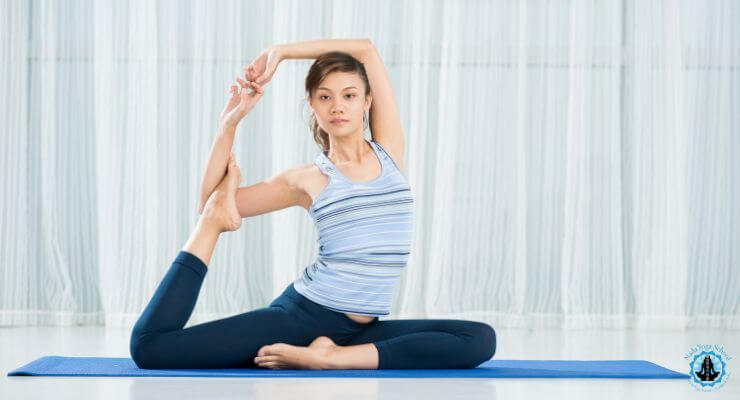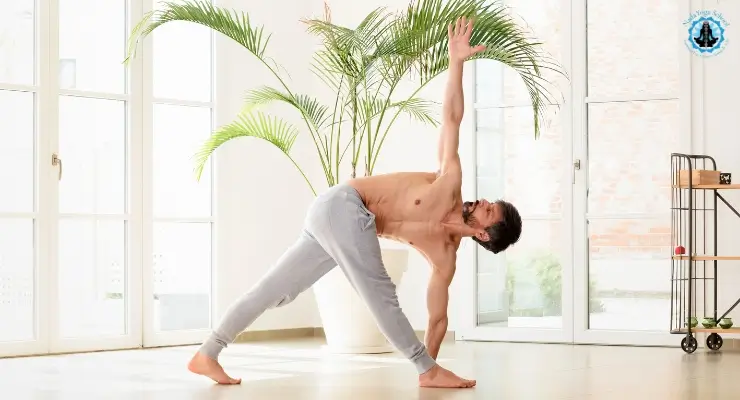Vyaghrasana, known as Tiger Pose, is a dynamic yoga posture that simulates the stretching movement of a tiger. It combines stretching with balance and strength, targeting the spine, legs, and core muscles. This asana is excellent for enhancing flexibility, especially in the spine, and for stimulating the nervous system.
How to Do Vyaghrasana (Tiger Pose)
- Starting Position: Begin in a tabletop position with your wrists under your shoulders and your knees under your hips. Keep your spine neutral and your gaze downward.
- Inhaling Movement: Inhale, raise your right leg back and up, keeping it straight, while simultaneously lifting your head and looking forward. Arch your back slightly to deepen the stretch.
- Exhaling Movement: Exhale, bring your knee towards your nose, rounding your back and tucking your chin to your chest, mimicking the movement of a stretching tiger.
- Flowing Between Movements: Repeat this flow for several breaths, then switch sides and repeat with the left leg.
- Repetition: Perform the movement 3-5 times on each side, synchronizing the movement with your breath for a fluid motion.
Benefits of Vyaghrasana
- Improves Spinal Flexibility: The arching and rounding of the back enhances spinal flexibility and can relieve tension in the spine.
- Strengthens Muscles: Strengthens the shoulders, arms, and legs, as well as the core muscles for improved balance and stability.
- Stimulates Digestive System: The movement massages the abdominal organs, stimulating the digestive system.
- Enhances Nervous System Function: The coordination required for this pose stimulates the nervous system, improving focus and mental clarity.
- Relieves Stress: The rhythmic movement can help to relieve stress and create a sense of mental calm.
Contraindications
- Knee or Wrist Issues: Those with knee or wrist issues should approach this pose with caution or modify it to reduce pressure on these joints.
- Severe Back Problems: Individuals with severe back problems should consult with a healthcare professional before attempting this pose.
- Neck Injuries: Be cautious with the movement of the neck, especially if you have had a neck injury.
Modifications and Tips
- Use a Mat: Practice on a yoga mat to cushion your knees and palms.
- Modifications for Knees: Place a folded blanket under your knees for extra cushioning if needed.
- Gaze and Neck: Keep your gaze down and your neck in a neutral position if you experience any neck discomfort during the pose.
Conclusion
Vyaghrasana offers a unique blend of flexibility, strength, and balance, making it a beneficial pose for practitioners looking to enhance spinal health and core strength. The dynamic nature of the pose, coupled with its ability to relieve stress and stimulate the digestive system, makes it a valuable addition to any yoga practice.




